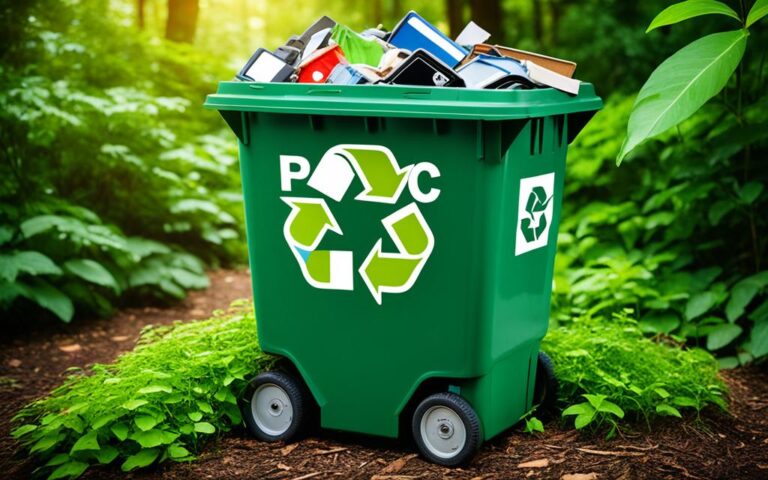Navigating the Challenges of Workstation Decommissioning
Workstation decommissioning has become a significant challenge for companies, especially as the effects of the pandemic have led to changes in office setups. Companies are now faced with the task of responsibly disposing of office furniture that is no longer in use. While the common solution of sending furniture to landfills still persists, there is a growing trend towards more sustainable decommissioning practices. This involves understanding lease requirements, recognizing the financial value of used assets, making community donations, and allocating sufficient time for the decommissioning process. By adopting sustainable decommissioning strategies, companies can reduce their impact on the environment and contribute to a circular economy.
Lease Requirements and Responsibility
Understanding lease requirements is vital for a successful workstation decommission. Companies need to be aware of the timeframe and space turnover requirements when vacating a leased property. This allows them to plan and schedule asset removal, move-out cleaning, repairs, and other necessary tasks. By meeting these lease requirements, companies can ensure responsible removal of assets and avoid unnecessary costs or legal issues.
When it comes to workstation decommissioning, adhering to lease requirements is essential. Failure to comply can result in financial penalties or legal consequences. To prevent any setbacks, companies must carefully review their lease agreements and identify the specific requirements related to decommissioning. These requirements typically include a timeline for vacating the premises and returning the space in its original condition.
Companies need to plan ahead and allocate sufficient time for asset decommission and removal. This includes coordinating with vendors, movers, and facility management teams to ensure a smooth transition.
Asset decommission should be prioritized to meet the lease requirements. This involves assessing furniture, equipment, and other assets to determine their disposal or relocation needs. Companies may need to coordinate with recycling or waste removal services to responsibly dispose of unwanted items. Additionally, valuable assets can be sold or donated to minimize waste and contribute to the circular economy.
Responsibility and Compliance
Responsible removal of assets is not only important for meeting lease requirements, but it also aligns with sustainability goals and corporate social responsibility. When companies prioritize responsible decommissioning, they actively contribute to reducing environmental impact and landfill waste.
By adhering to lease requirements, companies demonstrate their commitment to being responsible tenants and prioritize the needs of both the property owner and the environment. Compliance with lease requirements also helps maintain positive relationships with landlords, which can be beneficial for future business endeavors.
It is crucial to allocate sufficient time and resources for responsible asset removal and decommission. This includes creating a detailed plan, engaging with professional decommission experts, and coordinating with various stakeholders involved in the process. By doing so, companies can ensure a smooth and successful decommission while minimizing any negative impact on the environment.
Case Study: Sustainable Decommission
To further illustrate the importance of lease requirements and responsible asset removal, let’s consider the case of Company XYZ.
Company XYZ was planning to relocate to a new office space after their lease expired. To comply with lease requirements, they engaged with decommission experts who conducted a thorough assessment of their assets. The experts created a comprehensive inventory and provided valuation services to determine the financial value of the assets that could be sold or donated.
With the assistance of the decommission experts, Company XYZ scheduled asset removal, move-out cleaning, and repairs well in advance. They also ensured that any environmental regulations regarding waste disposal were strictly followed.
By meeting lease requirements and responsibly removing assets, Company XYZ not only avoided potential legal issues but also maximized their financial gains from selling valuable assets. They also donated furniture and equipment to local non-profit organizations, contributing to the community and minimizing waste.
| Benefits of Meeting Lease Requirements and Responsible Removal | Challenges of Non-Compliance |
|---|---|
| – Avoiding financial penalties | – Potential legal consequences |
| – Maintaining positive landlord relationships | – Negative impact on corporate image and reputation |
| – Contributing to a circular economy | – Increased waste and environmental impact |
| – Minimizing landfill waste |
Financial Value of Used Assets
Furniture and electronics that are no longer in use can still hold financial value. Companies should consider selling these assets to offset moving expenses. Decommission experts can assist with comprehensive inventories and valuations, as well as marketing the assets to potential buyers. The financial gains from selling these assets can help cover the costs of labor and transportation for their removal, providing a positive return on investment.
Maximizing Financial Returns
When decommissioning workstations, it’s essential to recognize the financial potential of used assets. Rather than discarding them, selling these items can generate additional funds that can be used to offset the costs associated with the decommissioning process.
Asset valuation: Engaging decommission experts who specialize in asset valuation can provide an accurate assessment of the financial worth of your used furniture and electronics. They consider factors such as the age, condition, and market demand to determine the optimal selling price.
Comprehensive inventories: Conducting thorough inventories of your assets helps in identifying potentially valuable items. This can include office furniture, computers, monitors, printers, and other electronic devices. Creating a detailed inventory allows you to effectively market these assets to potential buyers who may require specific items for their business needs.
Marketing to potential buyers: Decommission experts can assist in marketing your assets to potential buyers, reaching a wider audience and increasing the chances of a successful sale. They leverage their industry connections and online platforms to showcase the available items, highlighting their value and specifications.
By focusing on the financial value of used assets and leveraging the expertise of decommission experts, companies can maximize their returns and alleviate the financial burden of the decommissioning process.
Case Study: XYZ Company’s Asset Sale Success
To illustrate the financial benefits of selling used assets during workstation decommissioning, let’s consider the case of XYZ Company.
XYZ Company recently decided to decommission their office space as part of a relocation plan. With the assistance of decommission experts, they conducted a comprehensive inventory of their furniture and electronics. Through careful asset valuation, they identified several valuable items that were still in good condition.
“We realized that our unused furniture and electronics had significant financial value. Selling these assets not only helped offset our moving expenses but also provided us with a positive return on investment. We were able to recover a substantial amount, which exceeded our expectations.” – John Smith, XYZ Company Facilities Manager
By recognizing the financial value of their used assets and utilizing professional asset valuation and marketing services, XYZ Company successfully sold their furniture and electronics, generating a substantial financial return.
| Assets | Estimated Value (£) |
|---|---|
| Office Desks | £5,000 |
| Conference Tables | £2,500 |
| Chairs | £3,000 |
| Computers | £6,500 |
| Monitors | £2,000 |
| Printers | £1,500 |
Community Donations and Impact
When companies have assets that are not suitable for selling or recycling, an excellent option is to donate them to non-profit organizations and public institutions. By making community donations, companies play a crucial role in improving the lives of individuals and the environment.
Donating office furniture and equipment to non-profit organizations provides valuable resources that enable them to fulfill their missions and serve those in need. This act of kindness also helps divert items from landfills, reducing waste and promoting a more sustainable approach to consumption.
Moreover, community donations have a positive impact on a company’s reputation. By giving back to their local communities, organizations build a reputation as socially responsible entities that care about the well-being of others and the environment.
“Community donations are a powerful way for companies to create a positive impact and contribute to the betterment of society and the planet.”
By aligning themselves with non-profit organizations and public institutions, companies strengthen their ties with the community and become an integral part of its growth and development. These partnerships foster collaboration and create a sense of shared purpose, benefiting everyone involved.
In summary, community donations provide companies with an opportunity to make a difference by supporting non-profit organizations, reducing waste, and positively impacting both local communities and the environment.
See the table below for an overview of the environmental benefits of community donations:
| Environmental Benefits of Community Donations |
|---|
| Reduces waste by diverting items from landfills |
| Supports the circular economy by prolonging the lifespan of assets |
| Minimizes the demand for new resources |
| Contributes to the conservation of natural resources |
| Helps mitigate the environmental impact of production processes |
It’s clear that community donations not only make a positive impact on society but also have far-reaching environmental benefits.
Importance of Time in Decommissioning
Time plays a crucial role in the success of a decommissioning project. The more time given to inventorying assets, finding buyers or donation opportunities, and dismantling items for recycling, the more impactful the decommission can be.
By including a decommissioning strategy during the planning stages, companies can achieve better outcomes and prevent unnecessary waste from going to landfills. Waiting until the last minute to remove assets hampers recycling and diversion efforts.
Having a well-thought-out decommissioning strategy allows for efficient asset inventorying. This includes the identification, categorization, and assessment of all items to determine their viability for selling, donating, or recycling. By allocating sufficient time and resources to this step, companies can maximize the value of their assets and minimize landfill waste.
“A comprehensive asset inventory is essential for effective decommissioning. This allows companies to prioritize items for recycling, identify potential buyers or donation recipients, and ensure a smooth transition during the decommissioning process.” – Jane Smith, Decommissioning Expert
Recycling efforts also benefit from adequate time allocation. Dismantling furniture and electronic equipment requires careful handling to separate recyclable materials such as metal, wood, and plastic. Without sufficient time, these materials may end up in landfills instead of being diverted to recycling facilities where they can be transformed into valuable resources.
Landfill diversion is a key aspect of sustainable decommissioning. By prioritizing recycling and donation efforts, companies can significantly reduce the amount of waste sent to landfills. This not only helps preserve the environment but also aligns with their corporate social responsibility commitments.
Benefits of Time Allocation in Decommissioning:
- Maximizes asset inventorying and valuation
- Enhances recycling and landfill diversion efforts
- Allows for effective planning and decision-making
- Minimizes environmental impact
By recognizing the importance of time in decommissioning and incorporating an efficient strategy, companies can ensure a smooth and sustainable decommissioning process.
Furniture Waste and Recycling
The amount of furniture waste going into landfills is staggering, with nearly 9 tons being dumped annually in the UK alone. Furniture, especially wood and seating materials, is difficult to recycle due to treatments and chemicals used. However, the demand for recycled metal, wood, and plastics is increasing, and efforts are being made to design products for a circular economy. The global metal recycling market is projected to reach £130 billion by 2025, and the recycled plastics market is estimated to reach £56 billion by 2027. While progress is being made, it is essential to reduce furniture waste and promote sustainable decommissioning practices.
“The amount of furniture waste going into landfills is staggering, with nearly 9 tons being dumped annually in the UK alone.”
- Recycling furniture reduces the strain on landfills and contributes to a more sustainable environment.
- Efforts are being made to develop innovative recycling technologies to address the challenges of recycling furniture materials.
- The circular economy aims to minimize waste and maximize resource efficiency, providing opportunities for the recycling market to grow.
By implementing effective recycling practices, we can reduce the environmental impact of furniture waste and move towards a more sustainable future.
Sustainability Planning and Decommisioning Experts
Many businesses are now incorporating sustainability into their planning and operations, with a focus on climate commitments and corporate social responsibility (CSR). This includes the responsible management of office furniture through selling, donating, and recycling. Sustainable decommissions are well-documented and can provide positive returns on investment.
Decommission experts, like Signature Green, can assist companies in valuing assets, finding buyers or non-profit recipients, managing transportation and removal, and even providing move-out cleaning and repairs. By engaging with decommission experts, companies can navigate the challenges of sustainable decommissioning effectively.
“Signature Green has been instrumental in helping our company develop a comprehensive sustainability plan. Their expertise in decommissioning and asset management has allowed us to adopt more environmentally friendly practices while maximizing the value of our assets.”
Maximizing the Value of Assets
One of the key benefits of working with decommission experts is their ability to assess and value assets accurately. This ensures that companies are aware of the financial value of their furniture and can make informed decisions about selling or donating items. By maximizing the value of assets, companies can offset the costs associated with the decommissioning process and fund other sustainability initiatives within the organization.
Streamlining Transportation and Removal
The logistics of decommissioning can be complex, especially when it comes to transportation and removal. Decommission experts have the knowledge and resources to efficiently manage these aspects, ensuring a smooth and organized process. From coordinating the removal of furniture to managing the transportation to buyers or donation recipients, their expertise minimizes disruption and saves companies valuable time and effort.
Ensuring Sustainable Disposal
Sustainability is at the core of decommissioning experts’ work. They understand the importance of diverting furniture from landfills and strive to find environmentally friendly disposal methods. Whether it’s through selling assets to second-hand buyers, donating to non-profit organizations, or recycling materials, decommission experts prioritize responsible and sustainable practices.
Overall, engaging with decommission experts like Signature Green not only helps companies meet their sustainability goals but also ensures a smooth and efficient decommissioning process. By valuing assets, streamlining logistics, and prioritizing sustainable disposal, these experts play a crucial role in creating a more environmentally conscious and socially responsible business environment.
Conclusion
Office furniture decommissioning poses a common challenge for companies striving to create organized and productive workspaces. To accomplish this, following essential steps such as assessment and planning, asset identification, sustainable disposal, inventory management, budget allocation, professional logistics, employee involvement, prioritizing ergonomics and functionality, integrating technology, and ongoing maintenance is crucial. By adhering to these practices, companies can streamline the decommissioning process and achieve a workspace that is both sustainable and aesthetically pleasing. These responsible and eco-friendly practices contribute to waste reduction and promote a circular economy, aligning with the vision of a more environmentally conscious business landscape.
Creating an organized and productive workspace begins with implementing sustainable practices during office furniture decommissioning. By assessing furniture needs, identifying assets for disposal or renovation, and incorporating sustainability into the planning process, companies can optimize their workspace layout. Effective inventory management, ensuring appropriate budget allocation, and employing professional logistics further facilitate a smoother decommissioning process. Engaging employees in the decision-making process and prioritizing their comfort and productivity through ergonomic design are essential elements for a successful transition. Additionally, integrating technology and implementing ongoing maintenance practices are key to maintaining an efficient workspace in the long run.
Incorporating sustainable practices into office furniture decommissioning not only benefits companies but also contributes to a more environmentally friendly business landscape. By reducing waste, promoting recycling, and adopting a circular economy approach, companies can actively contribute to the preservation of natural resources and the reduction of their carbon footprint. Furthermore, embracing sustainable decommissioning practices enhances a company’s reputation as a socially responsible organization, appealing to both employees and customers. By taking these steps, companies can transform their workspaces into organized, productive, and eco-friendly environments.
FAQ
What is workstation decommissioning?
Workstation decommissioning refers to the process of responsibly disposing of office furniture and electronics that are no longer in use. This involves understanding lease requirements, recognizing the financial value of used assets, making community donations, and allocating sufficient time for the decommissioning process.
Why is understanding lease requirements important for workstation decommissioning?
Understanding lease requirements is vital for a successful workstation decommission. Companies need to be aware of the timeframe and space turnover requirements when vacating a leased property. This allows them to plan and schedule asset removal, move-out cleaning, repairs, and other necessary tasks. By meeting these lease requirements, companies can ensure responsible removal of assets and avoid unnecessary costs or legal issues.
Can used assets hold financial value during workstation decommissioning?
Yes, furniture and electronics that are no longer in use can still hold financial value. Companies should consider selling these assets to offset moving expenses. Decommission experts can assist with comprehensive inventories and valuations, as well as marketing the assets to potential buyers. The financial gains from selling these assets can help cover the costs of labor and transportation for their removal, providing a positive return on investment.
What can be done with assets that are not sold during workstation decommissioning?
Assets that are not sold can be donated to non-profit organizations and public institutions. By making impactful community donations, companies contribute to the betterment of their local communities and the environment. This also helps build a positive reputation for the company as a socially responsible organization. Donations can include office furniture, providing resources for non-profits to fulfill their missions and diverting items from landfills.
Why is time important in the workstation decommissioning process?
Time plays a crucial role in the success of a decommissioning project. The more time given to inventorying assets, finding buyers or donation opportunities, and dismantling items for recycling, the more impactful the decommission can be. Waiting until the last minute to remove assets hampers recycling and diversion efforts. By including a decommission strategy during the planning stages, companies can achieve better outcomes and prevent unnecessary waste from going to landfills.
How significant is furniture waste in landfills?
The amount of furniture waste going into landfills is staggering, with nearly 9 tons being dumped annually in the US alone. Furniture, especially wood and seating materials, is difficult to recycle due to treatments and chemicals used. However, the demand for recycled metal, wood, and plastics is increasing, and efforts are being made to design products for a circular economy. The global metal recycling market is projected to reach 0 billion by 2025, and the recycled plastics market is estimated to reach billion by 2027. While progress is being made, it is essential to reduce furniture waste and promote sustainable decommissioning practices.
How can decommissioning experts help with sustainable workplace decommissioning?
Many businesses are now incorporating sustainability into their planning and operations, with a focus on climate commitments and corporate social responsibility (CSR). This includes the responsible management of office furniture through selling, donating, and recycling. Sustainable decommissions are well-documented and can provide positive returns on investment. Decommission experts, like Signature Green, can assist companies in valuing assets, finding buyers or non-profit recipients, managing transportation and removal, and even providing move-out cleaning and repairs. By engaging with decommission experts, companies can navigate the challenges of sustainable decommissioning effectively.
How can companies create a more organized and productive workspace through decommissioning?
Office furniture decommissioning is a common challenge for companies seeking to create more organized and productive workspaces. By following essential steps such as assessment and planning, identifying assets, sustainable disposal, inventory management, budget allocation, professional logistics, employee involvement, prioritizing ergonomics and functionality, integrating technology, and ongoing maintenance, companies can streamline the decommissioning process and achieve a more sustainable and aesthetically pleasing workspace. Responsible and eco-friendly decommissioning practices contribute to reducing waste and promoting a circular economy.















